Chinese New Year 2009 – family reunion dinner
My family celebrated Chinese New Year last weekend with a delicious family reunion dinner.
This year, Mum cooked just one of the dishes – the must-have chap chye, which consists of cabbage, mushrooms and other fungi, beancurd skin and vermicelli. I’ve loved this dish ever since I was a child. We were all very pleased and proud to discover that the newest member of the family, little 16-month-old Ruby, loved the chap chye, especially the fungi! Straw mushrooms, black cloud fungus, she gobbled it all up, asking for more.
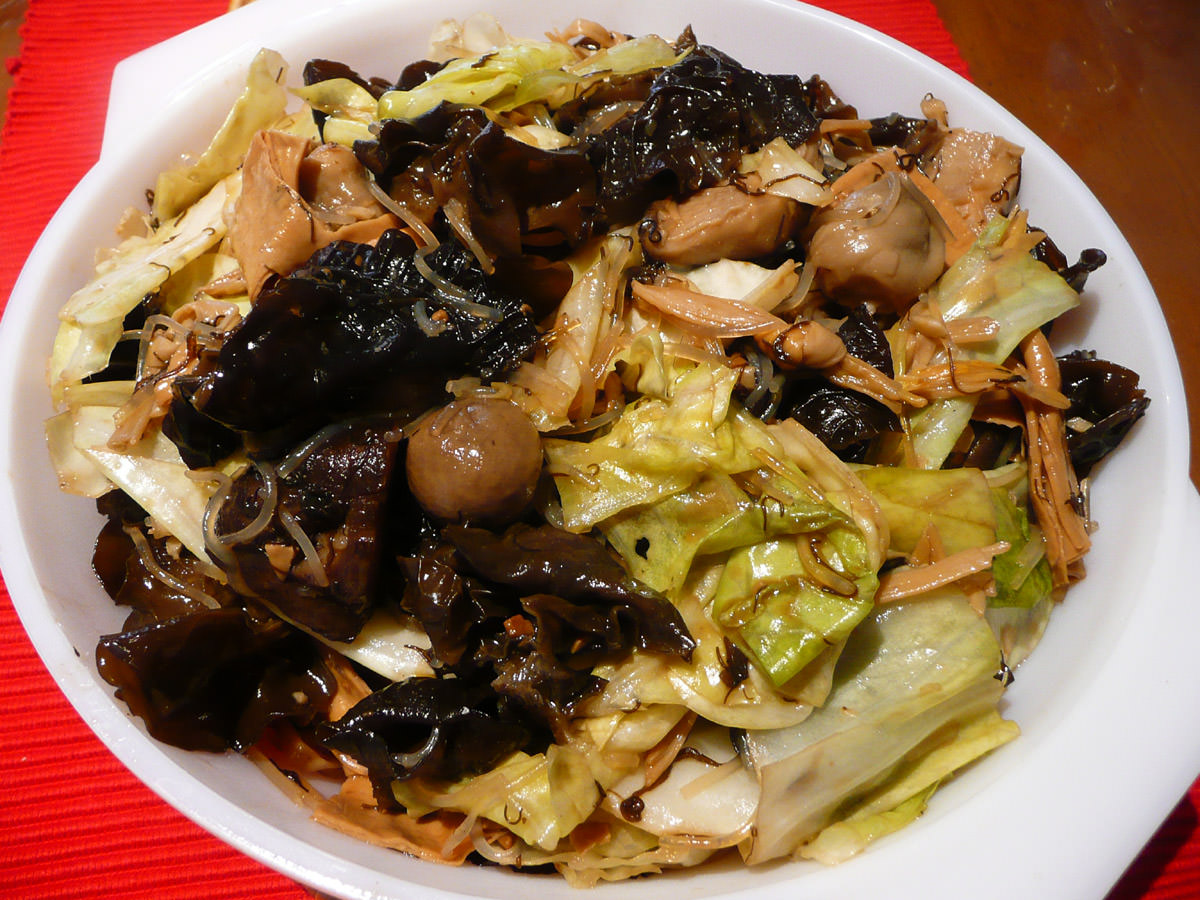
The roast duck was the only dish that wasn’t cooked by a family member. Roast duck is another must-have item for our Chinese New Year dinner.
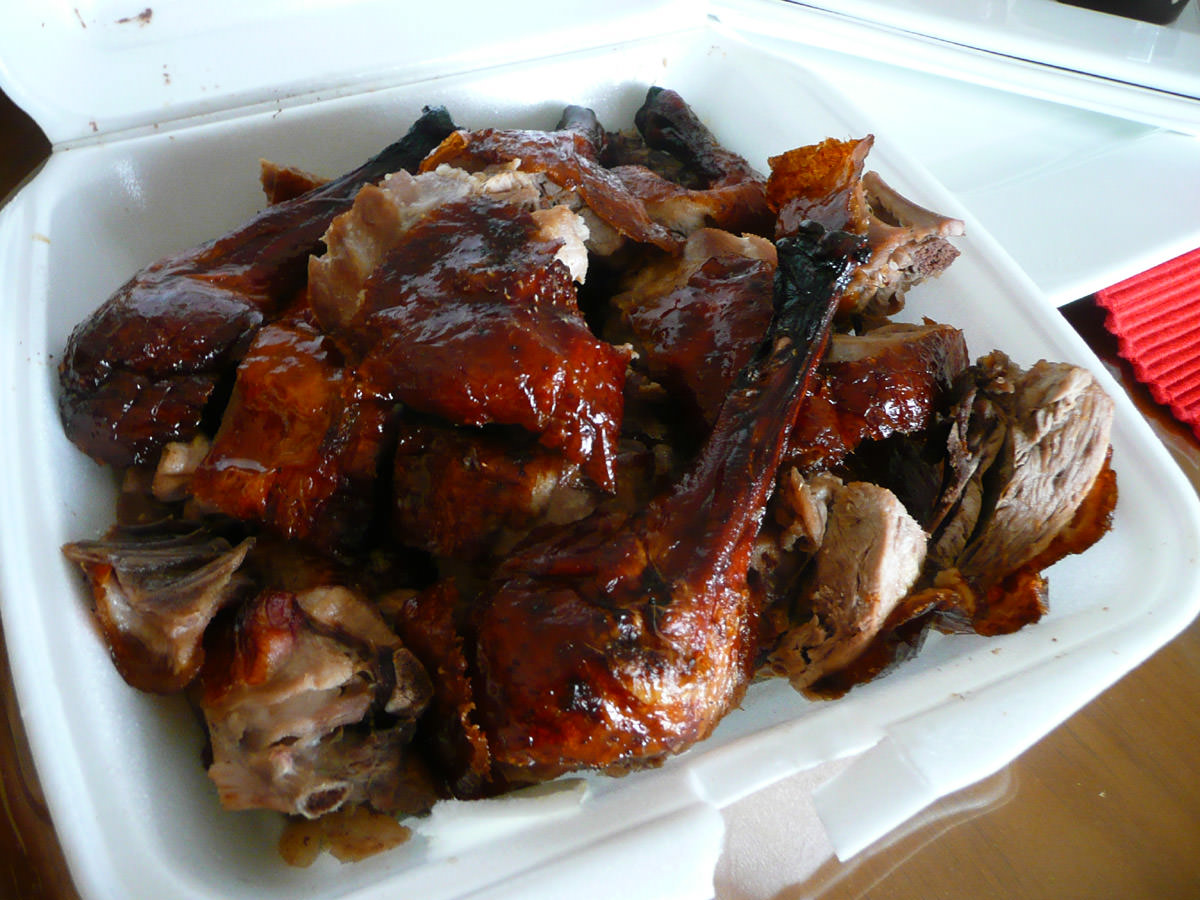
My brother and sister-in-law Angela (Ruby’s parents) brought along a big tray of marinated chicken wings and drumsticks, cooked in my mum’s oven, lovingly basted at regular intervals. The recipe is “sticky honey-glazed chicken” by Rick Stein, from an old issue of Delicious magazine (sorry, Ange doesn’t have details of which issue, and I am reluctant to post a recipe without proper attribution). See that drumstick at the bottom right corner of the platter? It was calling my name… and ended up on my plate. :)
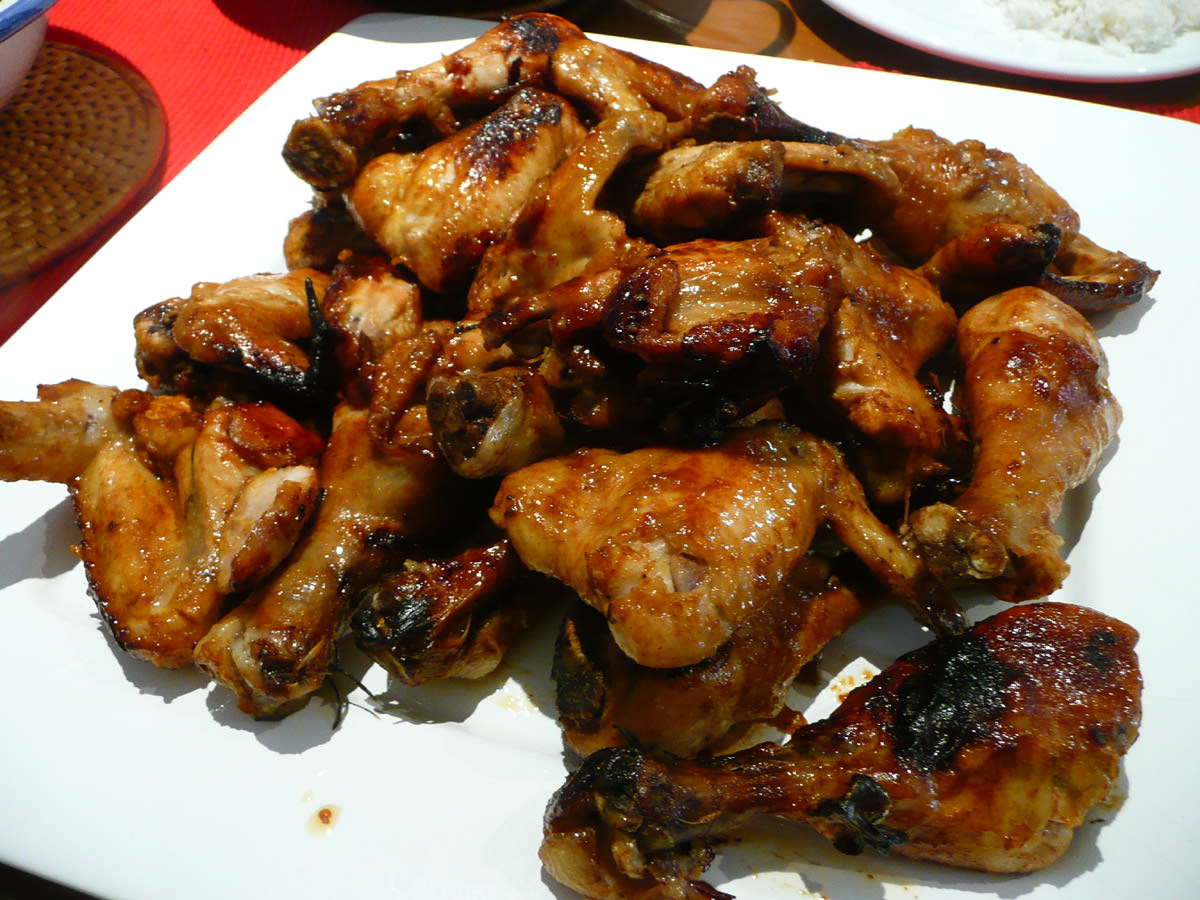
The rest of the meal (everything that follows in this post from this point on) was cooked by my younger sister Juji, who is a very talented cook. She did a magnificent job!
She stir-fried snow peas, baby corn and prawns with garlic and oyster sauce.
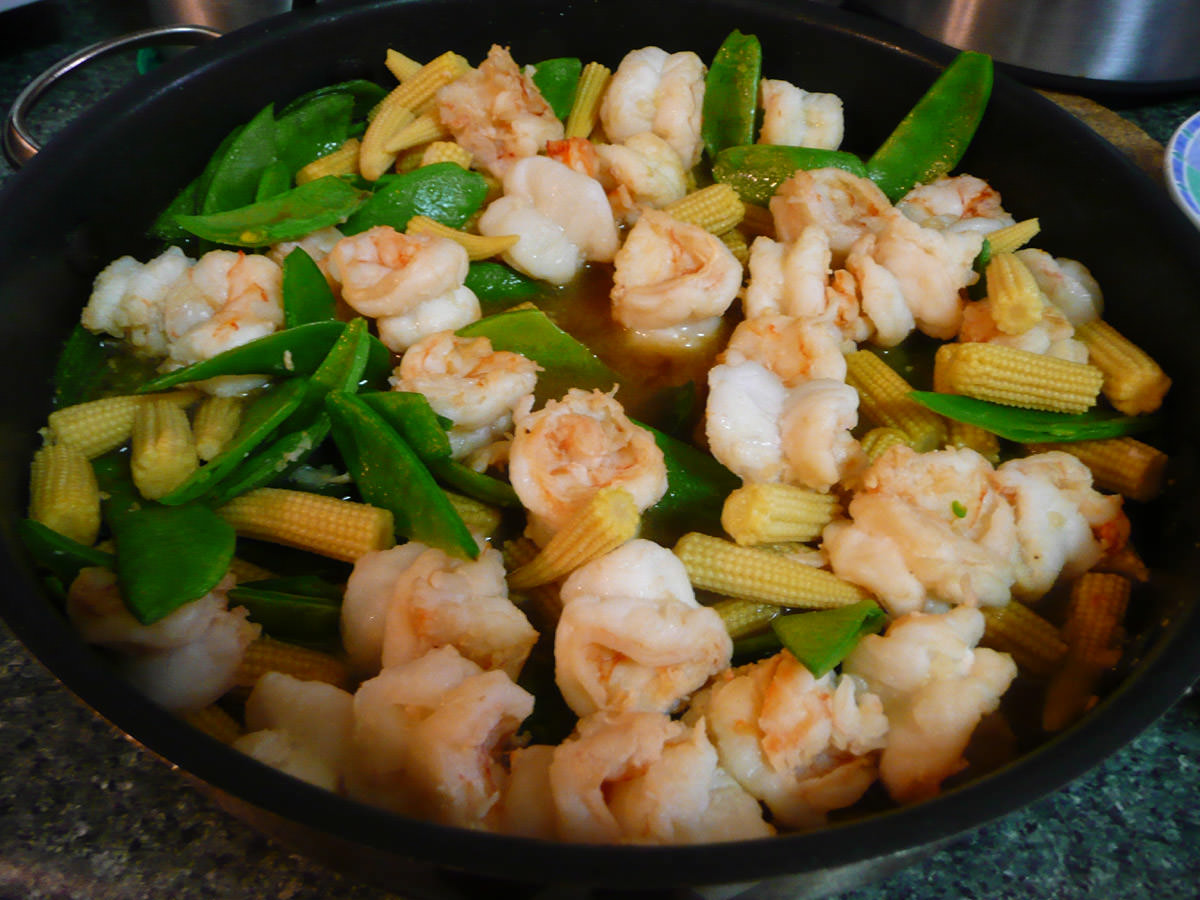
Look at all that garlic!
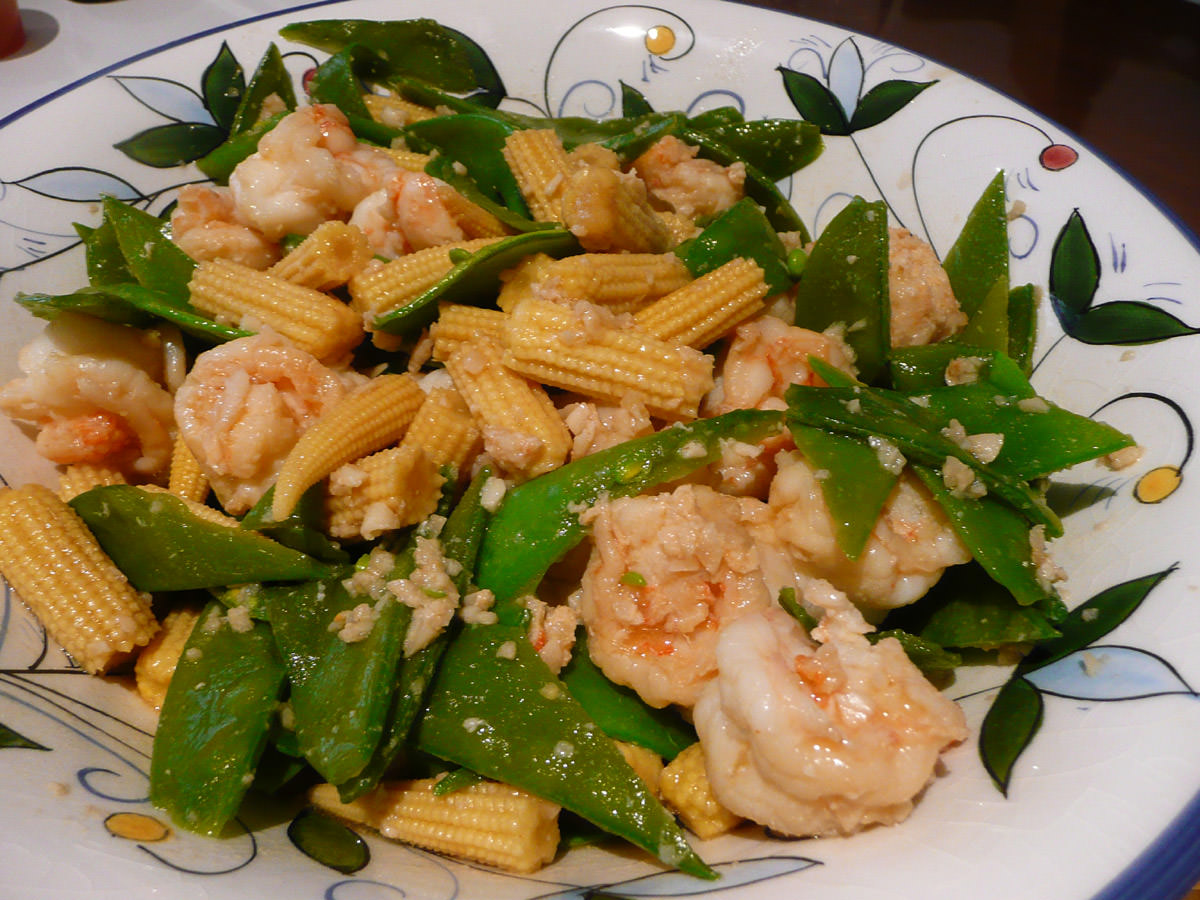
Juji also cooked a dish with Japanese egg tofu. This is her recipe:
Juji’s Japanese egg tofu
Preparing the tofu
Slice the Japanese egg tofu, dust in cornflour, then shallow fry in small batches. Be careful not to break the tofu as you cook it.Making the sauce
Fry 2 tbs of chopped garlic in a little oil.
Add 2 tsp fermented soybean (finely chopped)
Add 3/4 cup water, 1 and 1/2 tbs oyster sauce, 1 chopped hot chilli, and soy sauce and sugar to taste.
Let the mixture simmer.
Thicken with 2 tbs cornflour mixed with a little water.Cook a few eggs in a wok, breaking the yolks and leaving them gooey.
To serve, Juji simply left the egg at the bottom of the wok, piled the tofu on top, and poured the warmed tofu sauce over, and served the dish in the wok. You could easily place the tofu in a dish, place the egg over the tofu, then pour on the sauce. It’s up to you. Juji had planned to add chopped spring onion at the end but forgot; I didn’t miss it, taste-wise. If you wanted to make this dish even more deluxe, you could add (as our favourite Chinese takeaway does) chopped snow peas and sliced straw mushrooms to the sauce. I’m sure there are many more variations.
I thought the egg looked positively mouthwatering at this stage.
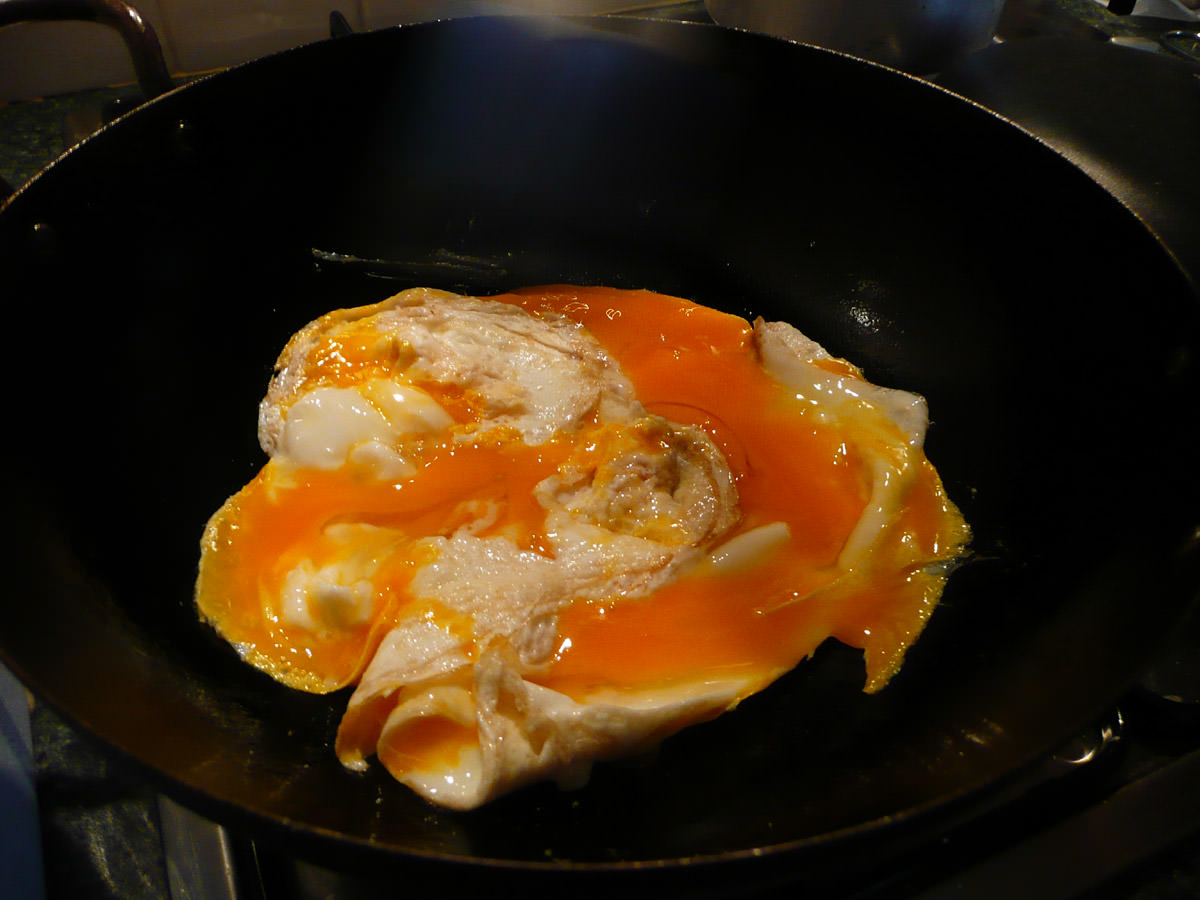
This was how the egg looked shortly before Juji took the wok off the heat.
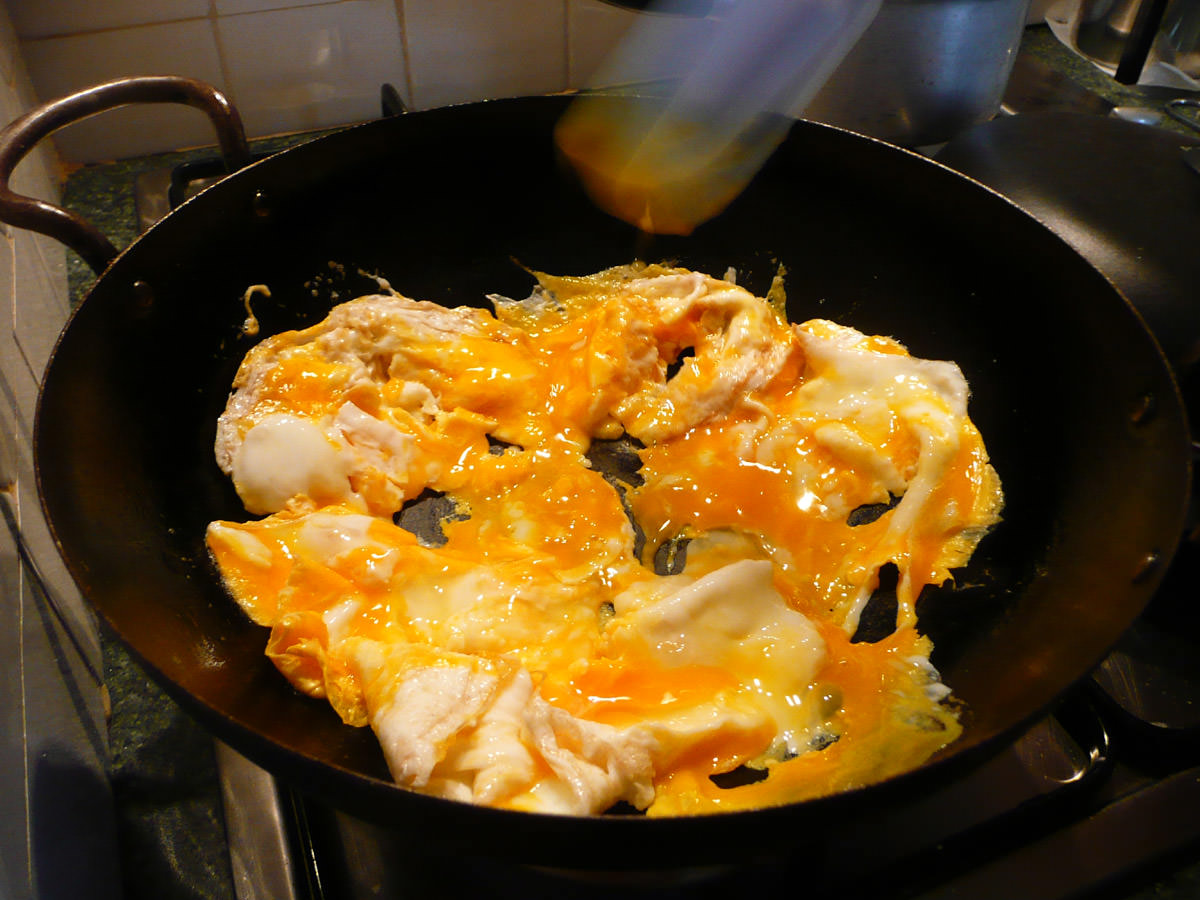
The tofu dish was delicious. I love the soft, lusciously creamy custardy texture of the egg tofu.
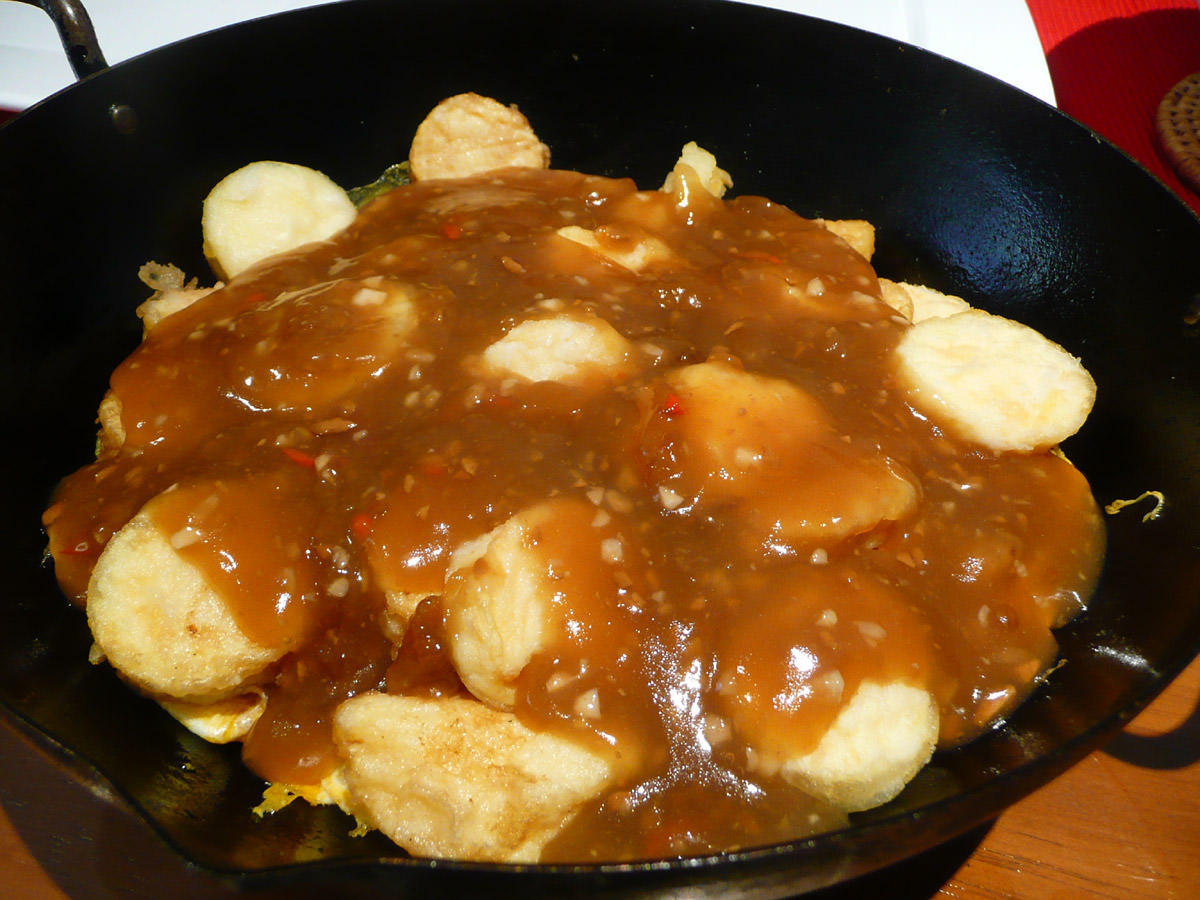
For me, the highlight of the meal was Juji’s roasted pork belly. This was a dish she’d really been looking forward to cooking.
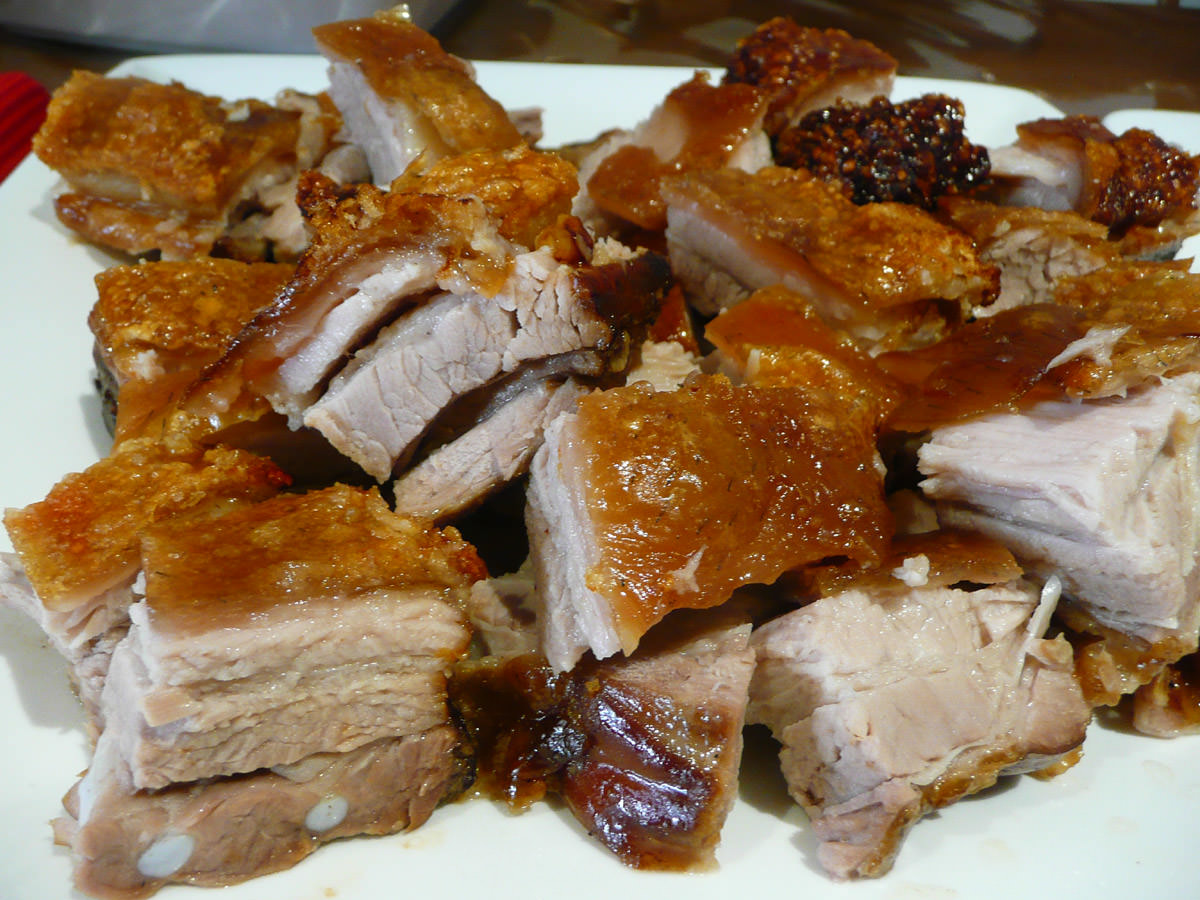
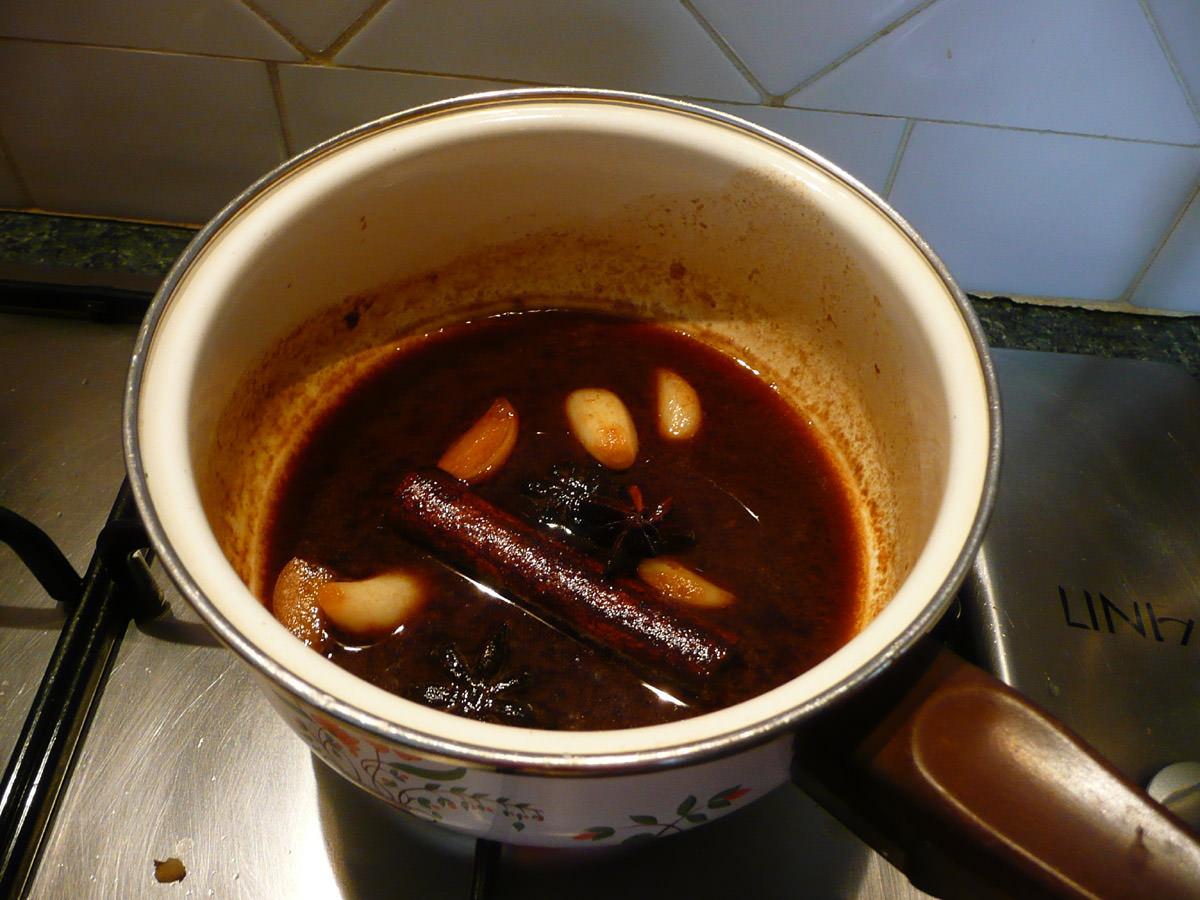
Here’s her recipe:
Roasted pork belly
Roast pork marinade
4 cloves garlic
3 star anise
1 stick cinnamon
1/4 cup gula melaka
1/2 cup soy sauce
1/4 cup brown malt vinegar
tbs oyster sauce
tbs sugarAt least one night before you plan to eat the pork
Place all of the marinade ingredients in a saucepan and bring to the boil.
Place the mixture in a shallow baking dish large enough to hold the pork. Juji used a piece of pork belly that weighed around 2.5 kg.Pierce the pork all over the flesh side with a small knife to allow the flavours to penetrate. Place pork flesh side down into marinade
Place paper towel on top of the skin, weigh it down(Juji used canned fruit in a baking tray on top), leave the pork in the fridge at least overnight.
The day of cooking and feasting
Remove the weights and paper towel, rub salt into the skin.
Allow the pork to come to closer to room temperature as you preheat the oven preheat to 250C.Just before roasting, rub some vegetable oil onto the salted pork skin.
Place the pork on a rack in a baking tray, and cook it in the oven for approximately 40 minutes until the skin begins to crisp up.
It should start to bubble. If you feel you need more time to achieve better skin, go ahead. Different ovens may need more or less time.
Once you feel satisfied with crispness of the skin, turn the oven down to 160C and cook the pork 1/2 hr for every half kilo in addition to the time already spent crisping up the skin.When the pork is done, rest it anywhere from 30 minutes to 1 hour.
Slice it up and serve.
This was easily the most tender and moist Chinese-style roast pork I have ever eaten, and I’m not exaggerating or being overly generous because my sister cooked it. :) The crackling was beautifully crispy. I hope she’ll cook this again, and not just at our next Chinese New Year dinner!
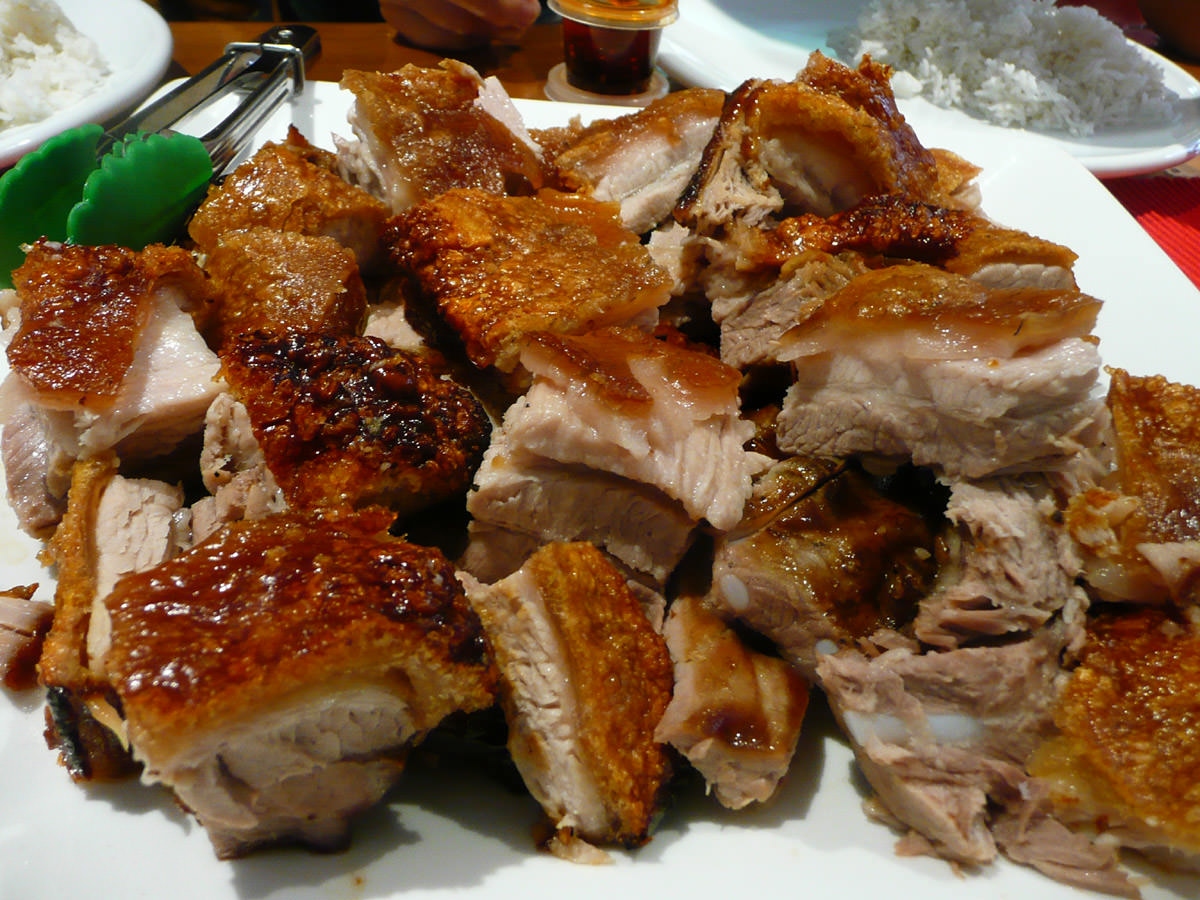
Here’s my plate. I made sure to get a little of everything. I hadn’t eaten for 7 hours and was starving when I began, and this plate of food more than satisfied my hunger.
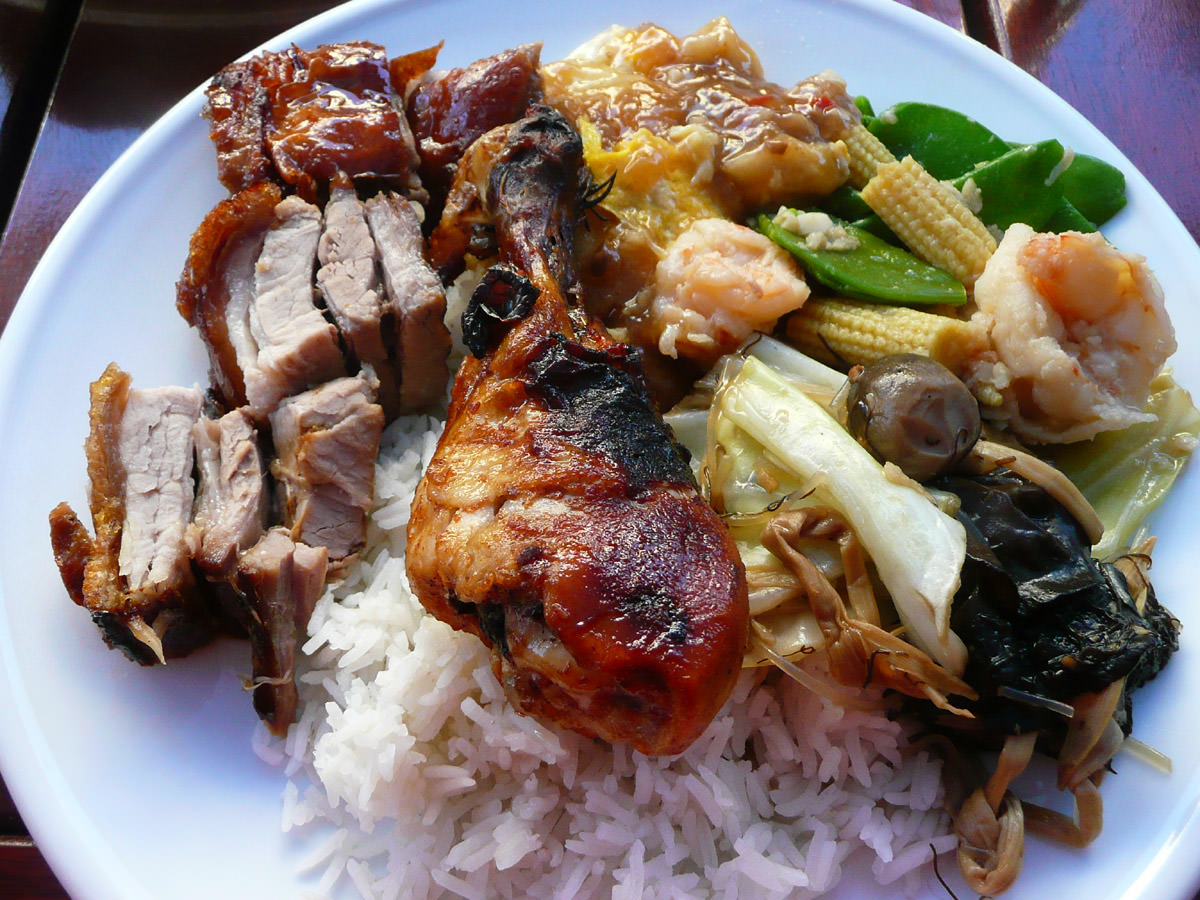
With the dinner plates cleared, it was time for dessert.
Gula melaka sago dessert with tang yuen (glutinous rice flour balls)
200 grams sago pearls
1 tin coconut milk
250 g gula melaka
1/4 cup sugar
1 vanilla pod
6 pandan leaves, tied into a knot
2 cups waterPreparing the syrup
Place water, sugar and gula melaka in a saucepan with the pandan leaves, and bring the mixture to a boil. If you buy your gula melaka in a block rather than pre-grated, you should chop it up before putting it in the saucepan, to speed up the syrup-making. Simmer for about 20 minutes until reduced slightly. Place in heatproof container, let it cool and refrigerate overnight.You may need to add more sugar to the gula melaka, depending on your taste.
Preparing the sago
Bring a large saucepan of water to boil.
Add the sago when the water is at a rolling boil.
Stir frequently.
The sago is cooked when the pearls have turned mostly clear (they’re white before cooking)
Strain and rinse under cold water.
Refridgerate overnight.Glutinous rice flour balls
Add boiling water to 200g glutinous rice flour and 2 tbs sugar.
Mix to make a soft dough – pliable but not sticky. Add pink food colouring to around 1/3 of dough.
Keep your hands lightly floured and quickly roll the dough into small balls. The white ones should be larger than the pink ones. The white and pink glutinous flour balls or “tang yuen” symbolise family unity – I believe white represents the parents and pink represents the children (or something like that).
Cook the balls immediately in boiling water. They will float to top when cooked.
Remove cooked balls from the boiling water and place them into cold water (with a little vanilla extract added to the water) before storing in refrigator. You need enough water to just cover the balls so they don’t dry out.Serving the dessert
To serve, place sago pearls and pink and white balls into bowls. Top with coconut milk and pour over the gula melaka syrup. Serve immediately.
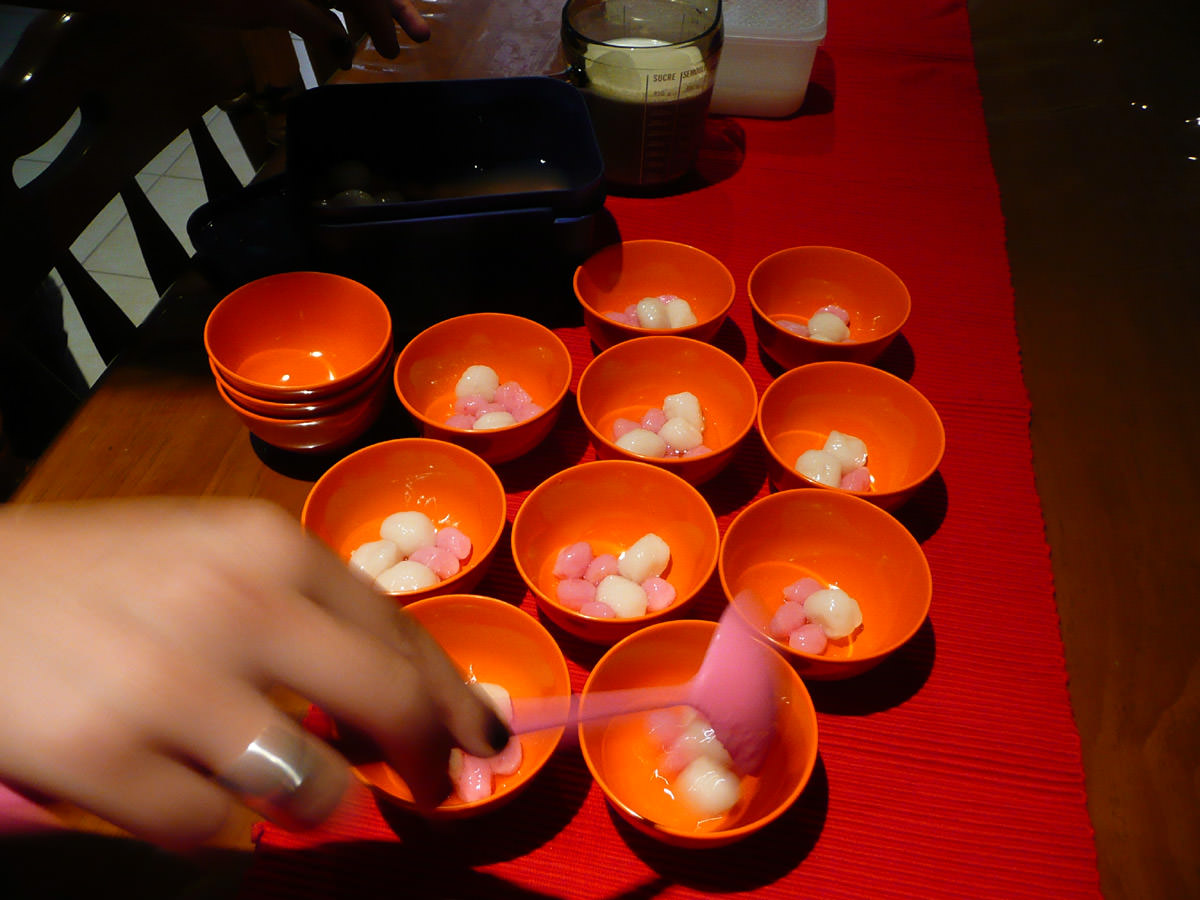
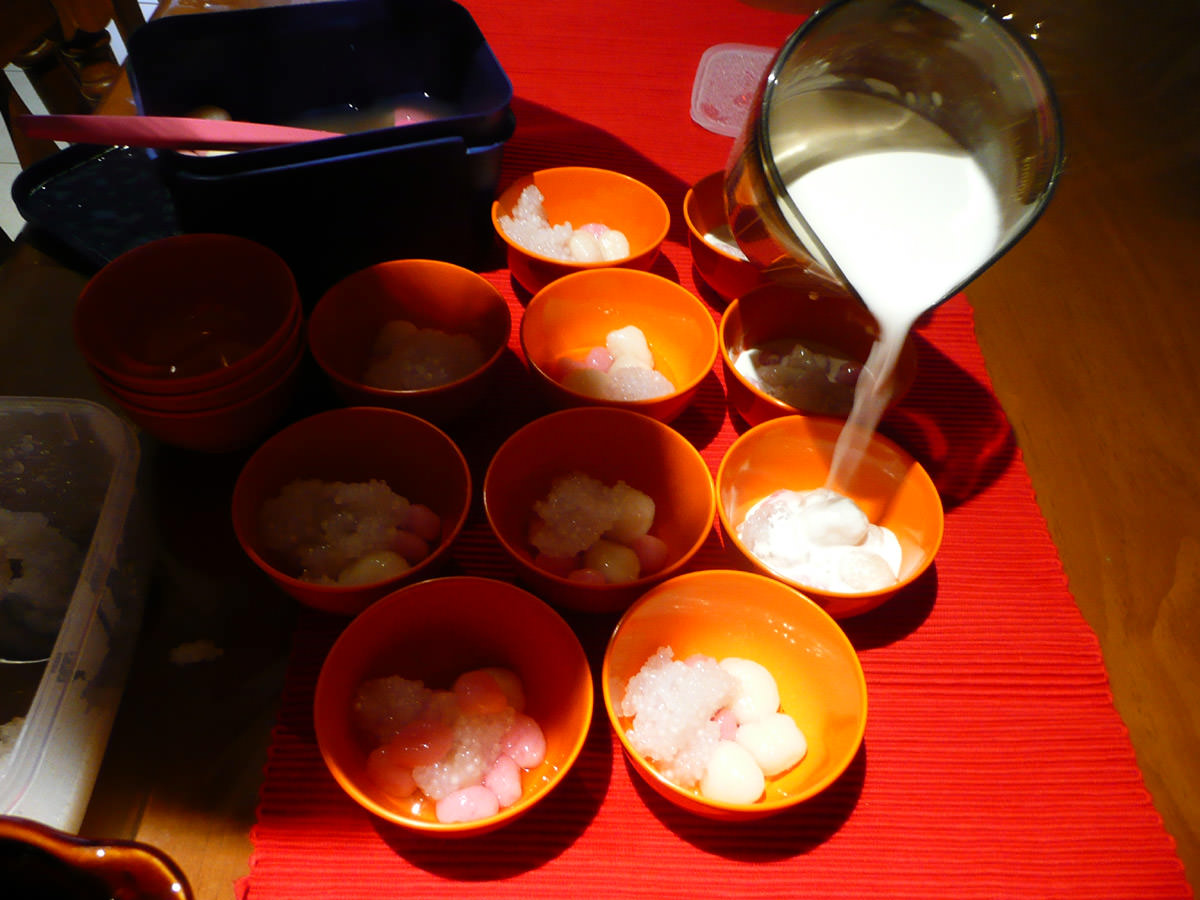
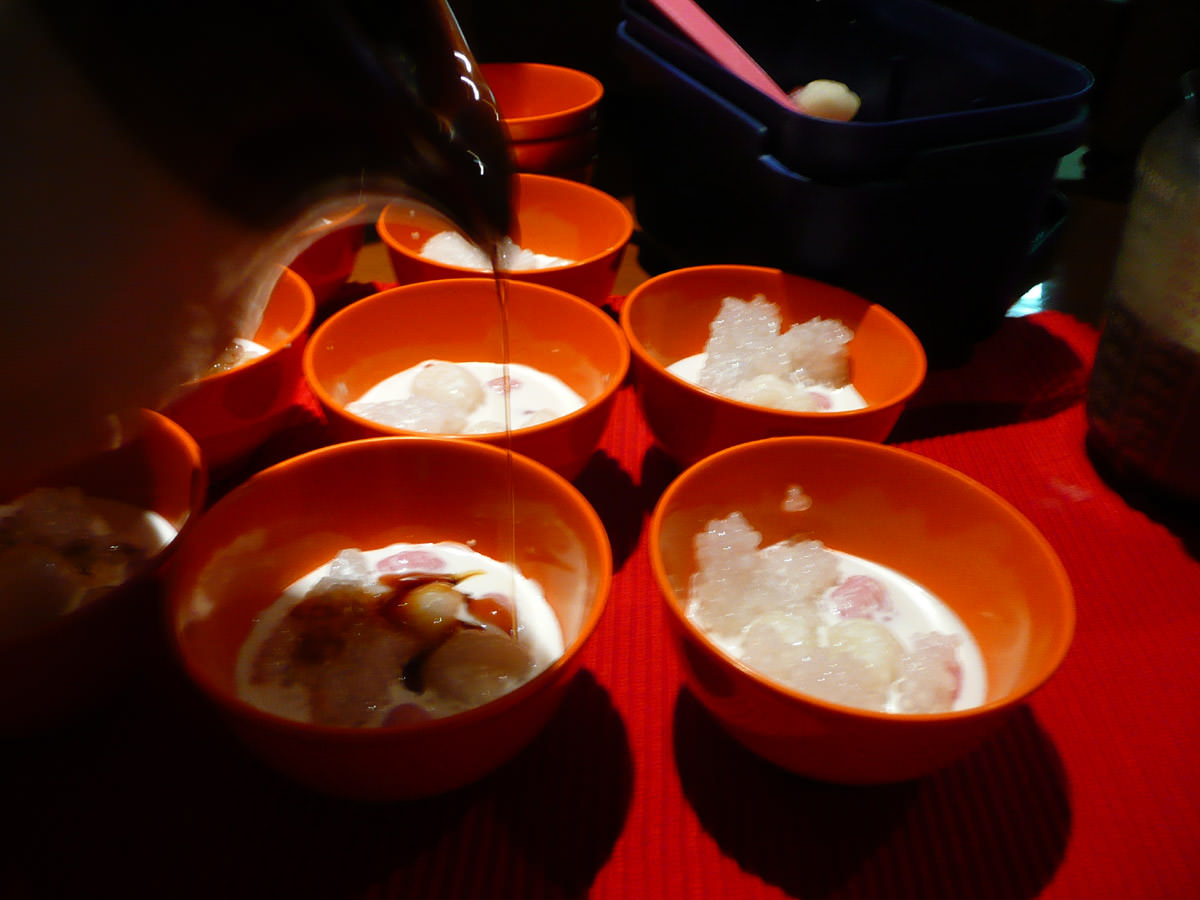
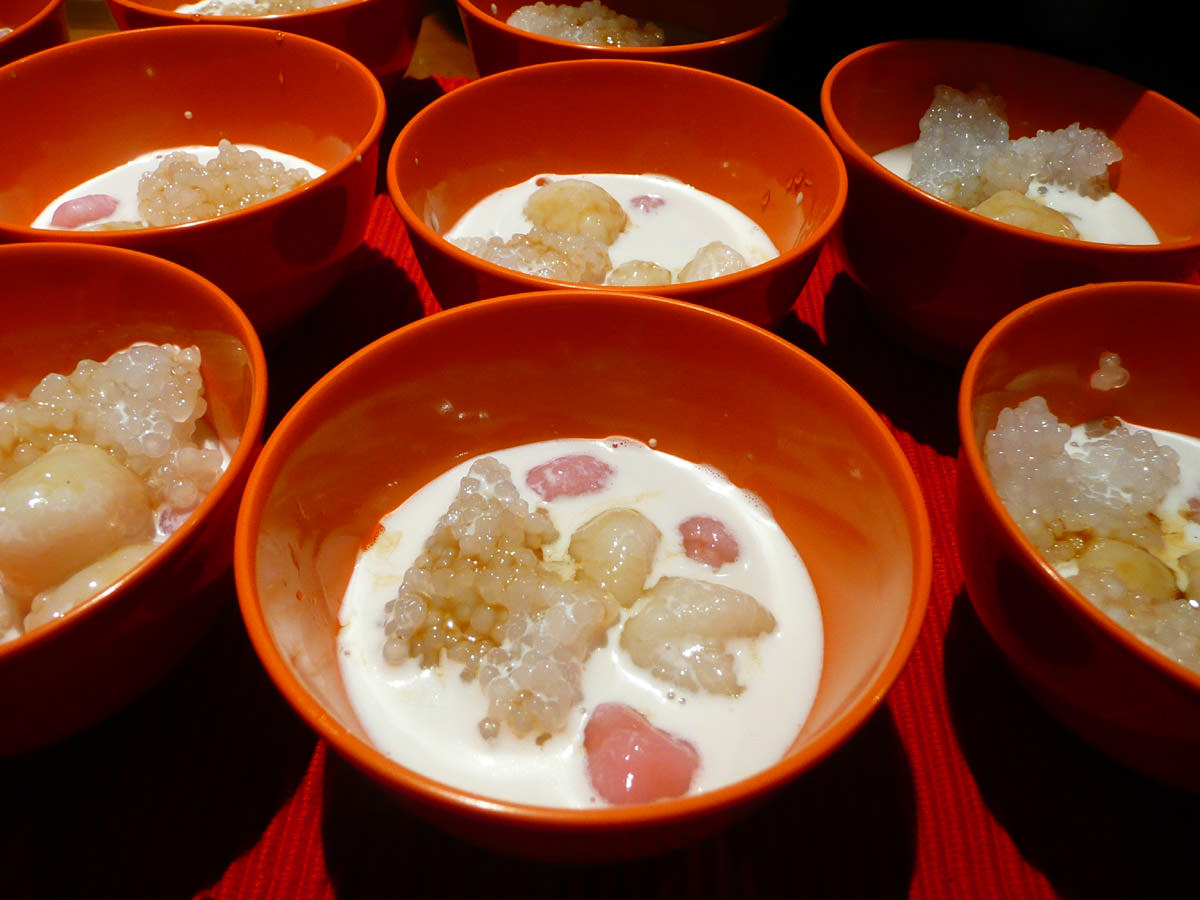
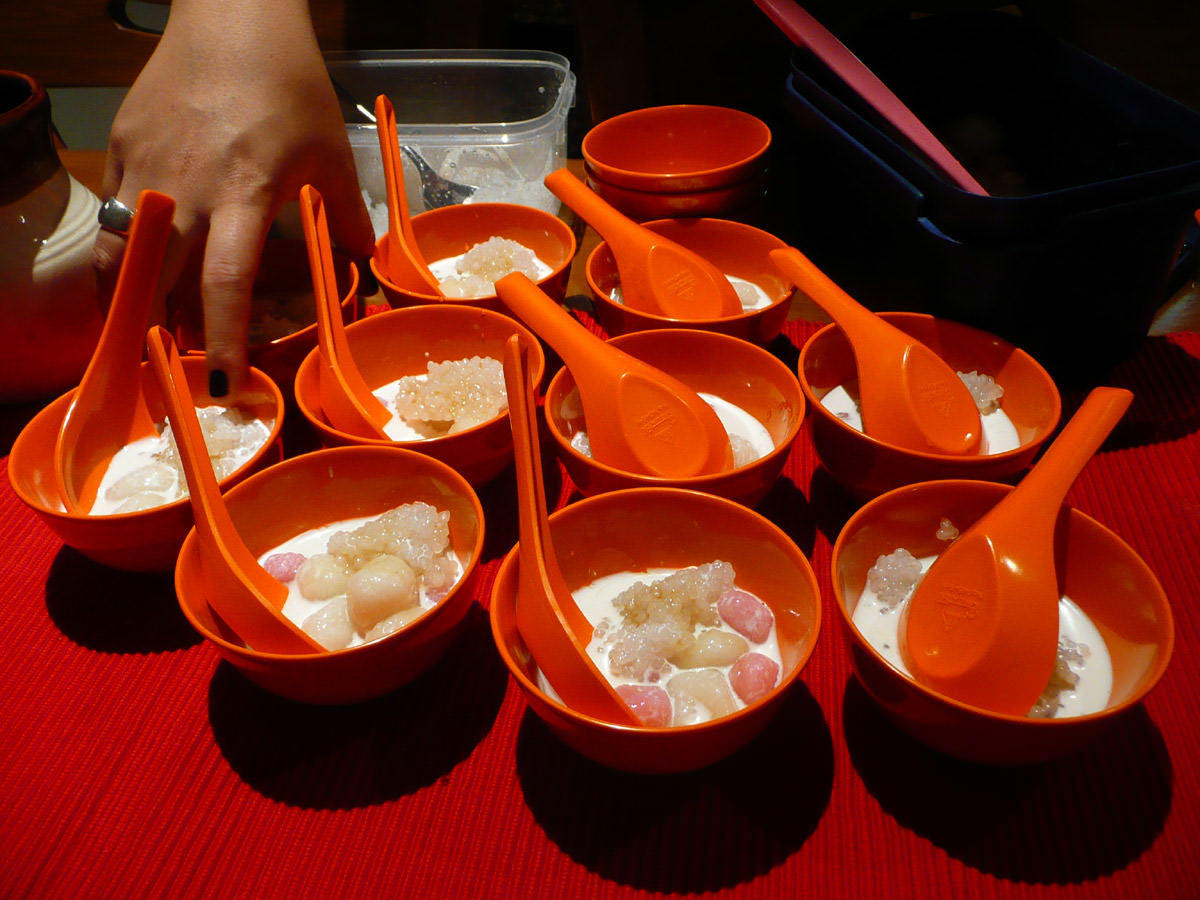
I really enjoyed this dessert. It was sweet, soft and refreshing. The gula melaka syrup is pretty strong stuff – a little goes a long way. I would’ve happily consumed multiple serves of dessert but was very full and had to stop after just one bowl.
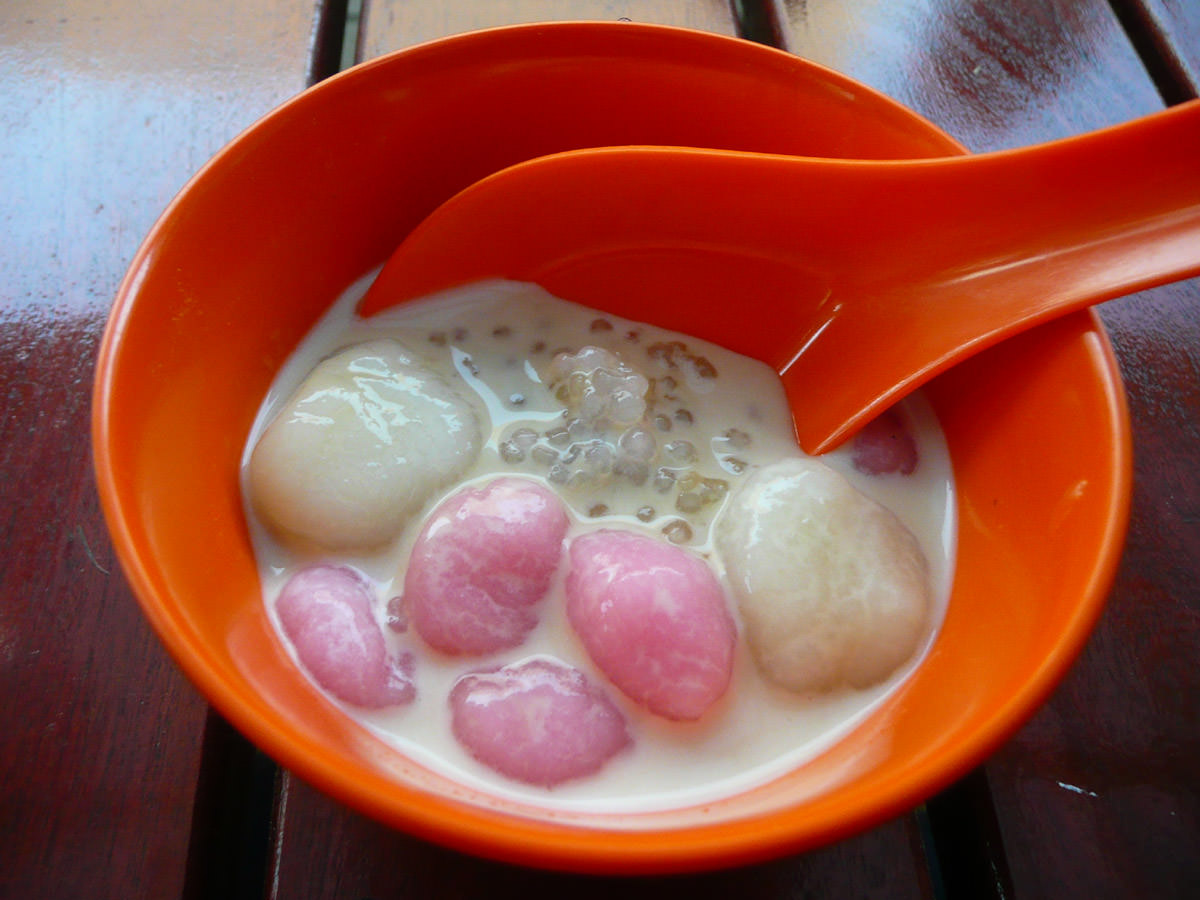
You know what was even more impressive? This was the first time Juji had cooked all those dishes! What lucky (and well fed) guinea pigs we were! Juji, thanks for sharing your recipes. I hope I transcribed them correctly. Please let me know if I missed anything out or if any details got mangled between your telling and my typing! :)
There you go, guys. Sorry it took so long to post. If you’re not sure what various items are e.g. Japanese egg tofu, gula melaka, pandan, etc., there’s plenty of information out there – Google is your friend. :)